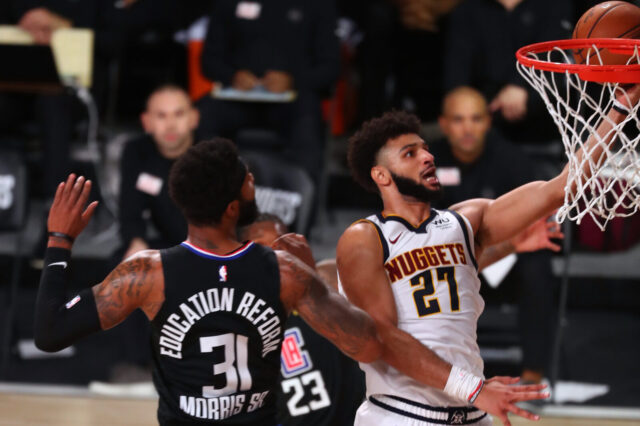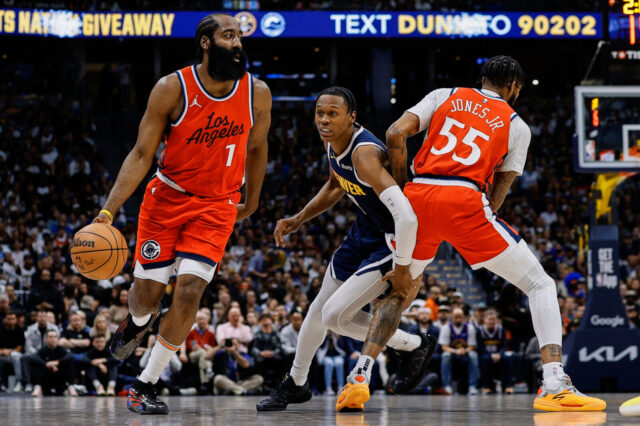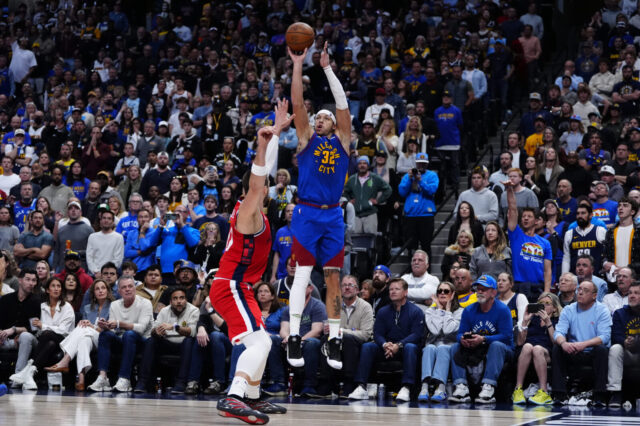Good to great.
That's been a pet phrase Nigel Hayes has used during his career at Wisconsin, a career that has included three years, two Final Four appearances, and one entertaining press conference after another.
Whether he's crashing weddings, dressing up as a ninja for Halloween, or driving to the rim for a two-hand jam, Hayes is always entertaining. The silly side Hayes has doesn't mean that he lacks a drive to improve – the 21-year-old from Toledo, Ohio, has developed from a freshman who played 663 minutes to the leader of a team that began the season ranked in the top 25 in the country.
"He has worked extremely hard when no one is looking," former Wisconsin coach Bo Ryan says. "The people in arena, they know that Nigel has been in the gym, more than most. It's no accident he has put himself in the position he has."
Hayes is excellent on the offensive end of the court, with range out to the 3-point line that complements a bevy of post moves that help him get buckets near the rim. The swing offense Bo Ryan implemented at Wisconsin benefits Hayes, who can set a screen and flare out to the wing for a 3-point attempt or duck into the post, spin past his defender and flip the ball off the glass for two points.
Hayes is one of the best players in the country at getting to the free throw line, having attempted 170 free throws in 21 games this season, good for twelfth in the nation. He’s shooting 74 percent when he gets to the line, and he has a free throw rate (the number of free throw attempts per field goal attempt) of 64.6 percent – for comparison sake, Danilo Gallinari leads the Nuggets in free throw rate this season with a rate of 58.6 percent.
How does Hayes get to the free throw line so much? He's got these freaking pterodactyl wings for arms, with a 7-foot-4-inch wingspan to complement his 6-foot-8-inch frame. Hayes is stacked, and uses his strong frame to get his shoulders into defenders, seek out contact, and finish while drawing a foul.
His perimeter touch isn’t elite for his position, but he does project to be about a 34 percent 3-point shooter in the NBA, which is enough of a threat for teams to respect him on the perimeter. As a comparison, Chris Bosh, Draymond Green and Paul Millsap all shoot around that same rate on 3-point attempts for their career. He’ll often put his head down and go hard to the rim, forcing shots when there are open players on the perimeter. It’s hard to fault a guy for attempting layups when he can go from just inside the 3-point line to the basket in one dribble though.
One of the things I like most about Hayes is his post-game. He has a nice set of finesse moves around the hoop, using his length and agility to create space. He hasn't been able to score as easily on bigger, NBA-sized defenders at power forward, but it is something he has been trying to do in his junior season. He also keeps his head up, and can whip the ball out of the post to shooters on the perimeter.
Another thing that stands out when watching Hayes is his perimeter defense. The Badgers haven't been going to the Final Four while sloughing on the defensive end, and Hayes has been a big part of that. He uses his wingspan to get steals, and has a 12-game stretch with at least one steal already this year. A lot of tweeners can't play after college because they can't keep up with wings and can't stand up to power forwards – Hayes has the athleticism to keep up with wings at least.
Hayes does struggle with turnovers at times, especially when putting the ball on the floor from perimeter. It's an area of his game that he has acknowledged he needs to work on, as smaller wing defenders will poke at the ball when he begins his dribble instead of choosing to let him drive into the paint.
He also struggles to rebound against bigger players, especially when he has to switch on defense. Part of that may be due to playing with a talented center like Kaminsky for two years, and his role in the defense however. Watch what Thomas Bryant, the Indiana Hoosiers 6-foot-10-inch, 245 lbs. center does to Hayes in this play. Bryant sits down on Hayes, is able to easily grab the offensive rebound, and quickly rises back up for an uncontested dunk.
If the Nuggets have a first round pick in the 20s come draft day, and Hayes has improved his physicality the remainder of the season, he is a player that they should consider adding to their team. He’s not a super-young prospect at power forward, but the Nuggets do have some positional depth at power forward, especially if Darrell Arthur opts in to the second year of his current contract.
Denver can play Kenneth Faried, Arthur, Gallinari, and even Wilson Chandler (next season) at power forward at times, meaning Hayes would not immediately be pressed into action. That would allow him to work on his jump shot in practice against NBA-size, as well as get gym time with the energetic Steve Hess, who would gladly send Hayes on some stadium stairs over at Red Rocks to get those legs stronger.
The Nuggets have already seen how effective a 6-foot-9-inch, 240 pound power forward (Darrell Arthur's measurements) can be in their scheme. In a league where finding power forwards that can defend the perimeter, stretch the floor, handle the ball and rebound are becoming more and more valuable (Bosh, Millsap, Green), the Nuggets shouldn't be afraid to take a chance on a player that has shown those types of skills in college.
One thing is for certain with Hayes – he's going to do all he can to go from good to great, no matter what team he winds up playing for.
Other Stiffs Prospects to Watch
This content is no longer available.


